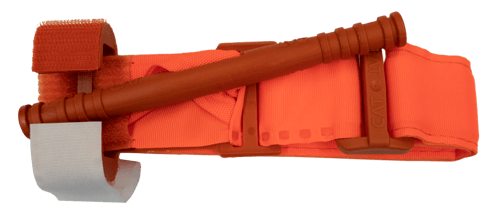 Tourniquets like the CAT (Combat Application Tourniquet) have been around for decades, but the conception of tourniquet application was invented long before that.
Tourniquets like the CAT (Combat Application Tourniquet) have been around for decades, but the conception of tourniquet application was invented long before that.
It's no surprise, then, that over such an extensive timeline, rules about applying tourniquets have changed in ways big and small. Each tweak of the process and adjustment to protocol has been the result of dedicated research and testing, and we can therefore confidently adhere to the changes knowing that we are providing the best emergency medical response that we are capable of providing in that moment.
Any time information changes, confusion can form and misinformation can spread. Many times, people fail to realize anything has changed at all. To squelch some of the confusion, we're addressing some commonly overlooked or unknown best practices for tourniquet application.
The 2-hour rule
Studies show that leaving a tourniquet on for more than two hours increases the risk of neurological damage. In most instances, neurological damage is not a concern because EMS will arrive and take over medical treatment long before an injured person has reached the two-hour threshold.
However, extreme circumstances sometimes occur in which a person may be stranded, lost, or unable to call for help. Situations like these may result in wearing tourniquet for an extended period of time, and while a tourniquet can cause permanent damage to a limb, removing it could result in death if the injured person loses too much blood. Therefore, the solution is simple: Do not remove a tourniquet. EMS and other medical professionals will know what to do when they reach you. Until then, your main goal is to stop the bleed.
To move or not to move
There's often confusion over whether or not an injured person should be moved. Moving someone with a severe hemorrhage will increase the flow of blood through their body and therefore increase their loss of blood. However, you must weigh your options and choose the lesser of two evils. If the injured person is in immediate danger (ex. in a hallway where an active shooter is approaching) drag them to safety (ex. inside an office with a lockable door). Once the person is removed from the direct threat, then work to stop the bleeding with a tourniquet or a makeshift tourniquet.
When to apply a tourniquet
A person can bleed out in just 2-3 minutes, so do not let the fear of causing neurological damage keep you from applying a tourniquet. The alternative of not applying a tourniquet at all is much worse, and every moment wasted in hesitating to treat a severe hemorrhage is another ounce of blood lost.
Apply a tourniquet when...
- there is severe bleeding from a limb and
- direct pressure does not stop the bleeding.
Other fast facts about tourniquet application:
Tourniquet application is not rocket science, but in an emergency situation, a person's ability to think clearly is severely inhibited. That's why it's important to note what sometimes seem like very basic facts. Here are a few:
- Tourniquets should be applied as HIGH, TIGHT and FAST as possible.
- If possible, apply pressure to the wound to at least slow the bleeding while you prepare the tourniquet. Every second counts! (Combat Application Tourniquets are designed for one-hand application, so you could realistically do this without a second person's help.)
- If one tourniquet does not stop the bleeding, and you have two tourniquets available to you, use both!
- A makeshift tourniquet is better than no tourniquet. Even if you can slow the bleeding, you are essentially buying a victim time until EMS arrives.
Do you feel ready to apply a tourniquet in an emergency? With skill-based, hands-on training, you will be able to confidently answer YES! Contact us today about our on-site emergency medical training classes for active shooter situations and more!
.png?width=499&height=133&name=Logo-menu%20(1).png)



